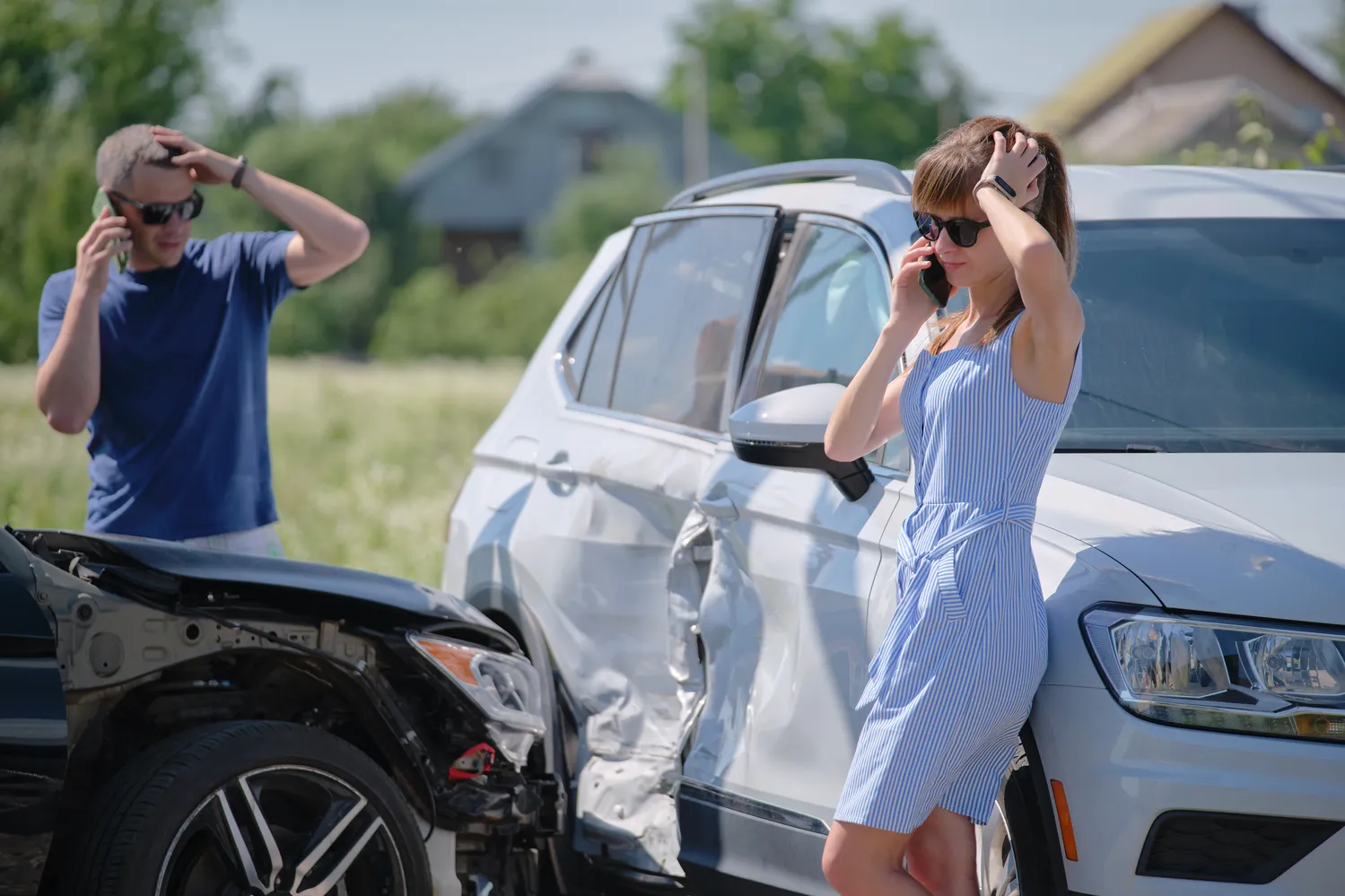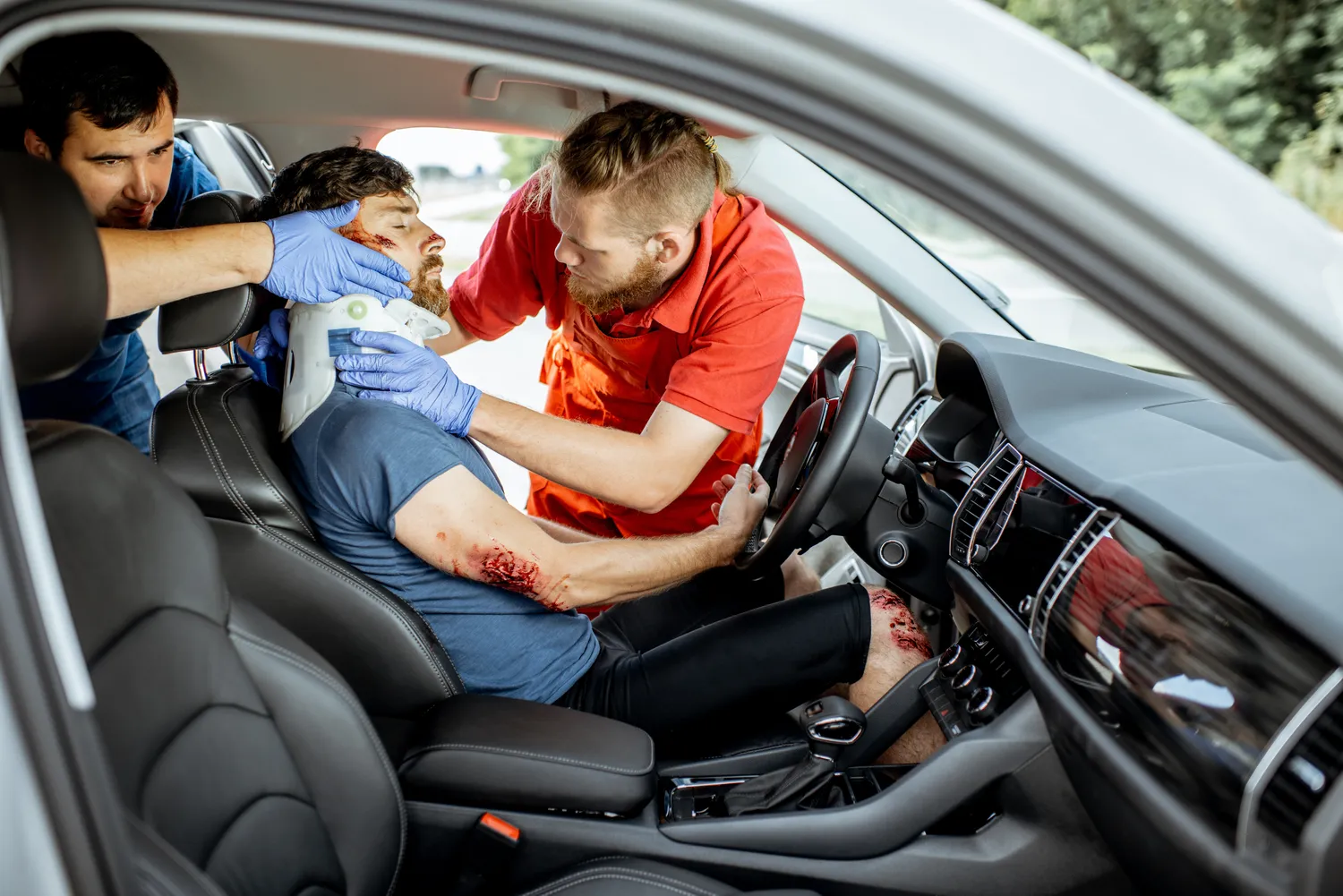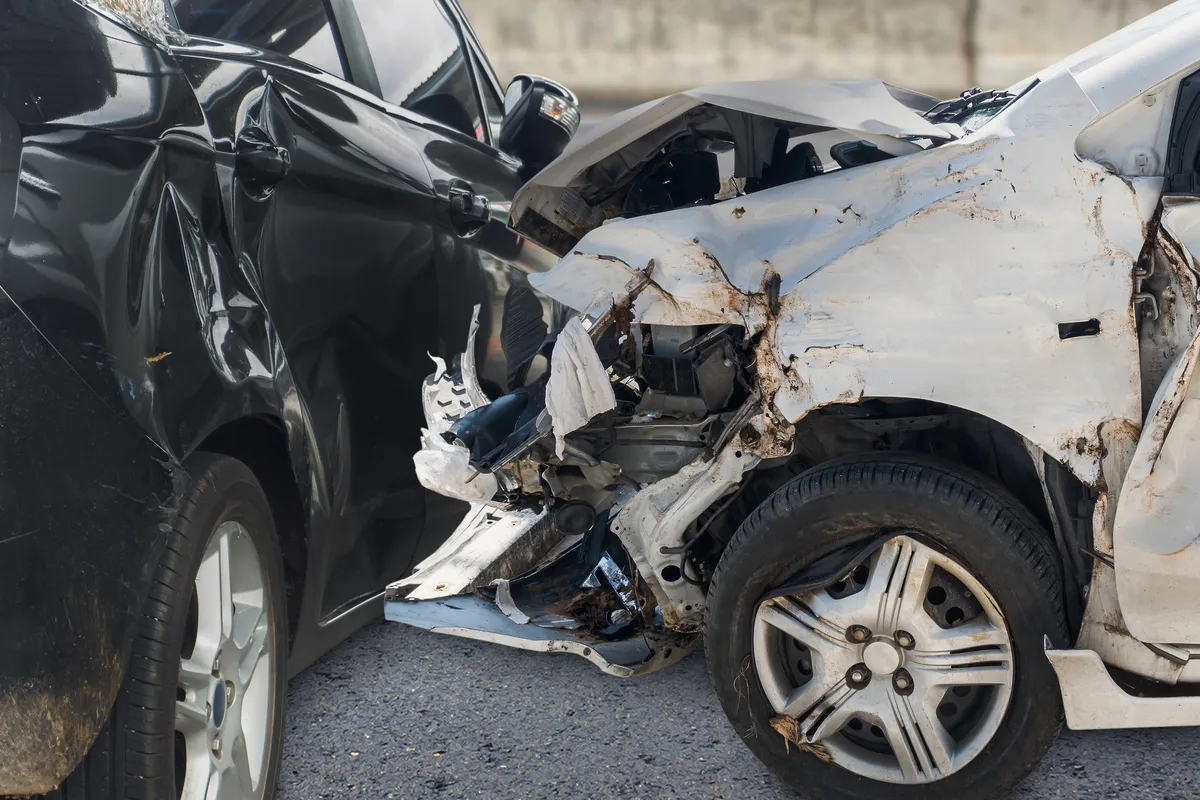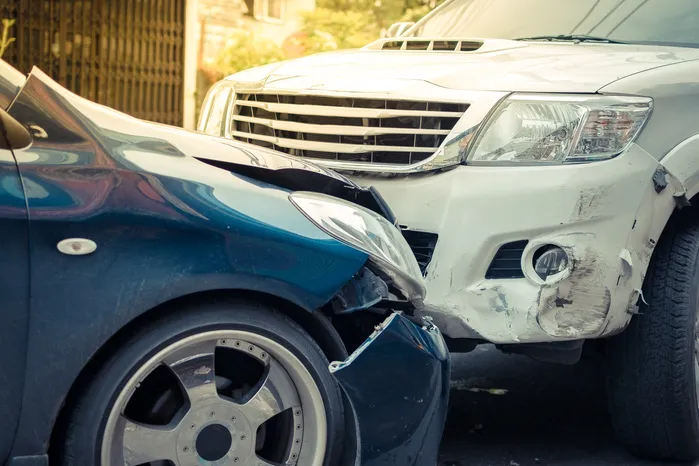8 min read time
Table of Contents
You are attempting a left turn when a driver runs a red light out of nowhere. Their vehicle strikes the side of yours, causing the side of your car to crumble.
That is one of the many scenarios in which a T-bone car accident can occur and cause devastating injuries, including death.
This article will inform you about T-bone collisions and their causes, damages, and legal options you can take following a T-bone accident.
What Is a T-Bone Accident?

A T-bone accident, also known as a side impact collision or broadside crash, occurs when the front of one vehicle collides with the side of another, forming a "T" shape at the point of impact.
T-bone collisions are usually seen on roads with high vehicle traffic and commonly occur at intersections, parking lots, and areas where vehicles cross paths.
Common Causes of T-Bone Accidents
T-bone accidents are often unexpected, as the driver getting hit usually doesn't see the vehicle. Understanding the common causes of T-bone accidents is essential for making drivers more aware and preventing future crashes.
Running Red Lights and Stop Signs
Most T-bone crashes happen when one driver runs a red light or stop sign at an intersection.
The driver who runs the stop sign or red light is often in a hurry or misjudges a traffic signal's timing and perceives the intersection as clear.
However, another vehicle passes through the intersection, leading to a T-bone crash.
Distracted Driving
Distracted driving leads to numerous accidents, and T-bone accidents are no exception.
Drivers distracted using their phones, eating, or adjusting the radio may fail to notice stop signs or another vehicle crossing their path, leading to a side-impact collision.
Speeding
Drivers speeding through intersections or roads cannot react to changing traffic conditions, such as a vehicle merging into a lane, which can result in them failing to stop in time, leading to a T-bone collision.
Failure to Yield Right-of-Way
When T-bone accidents happen, it's usually either due to one driver blowing a red light or a driver failing to yield the right-of-way.
Commonly seen at intersections, one driver assumes they have the right-of-way and attempts a turn past oncoming traffic, striking a vehicle that's legally passing through.
Poor Visibility
Adverse weather can cause drivers to have poor road visibility, leading them to miss traffic signals, stop signs, or other vehicles crossing the road.
Aggressive Driving
Aggressive drivers who speed, weave through traffic, or make unsafe lane changes put themselves and others into dangerous situations that can lead to side-impact collisions.
Injuries and Damages That Result from T-Bone Accidents

T-bone accidents can result in severe injuries such as traumatic brain injuries or spinal injuries that can lead to partial or complete paralysis. Common injuries associated with t-bone accidents are:
Traumatic Brain Injury: Severe brain trauma, such as a TBI, can include concussions and brain bleeding.
Neck injuries: Neck injuries may be caused by whiplash and can be serious injuries.
Broken Bones: Broken bones may occur in the ribs, arms, and legs. In addition, skull fractures can occur.
Internal Injuries: Internal injuries such as internal bleeding or organ damage are severe injuries that don't show immediate symptoms.
Spinal Cord Injuries: In high-impact T-bone collisions, spinal cord injuries could result in partial or complete paralysis.
Lacerations: Broken glass or twisted metal may result in deep cuts that require stitches.
Psychological Damage: Even minor injuries can result in mental damage, such as anxiety and depression.
Following a T-bone collision, it is vital to seek medical treatment even if you don't feel you have been injured.
Determining Fault in a T-Bone Accident
Exposing and proving the other driver's negligence in your T-bone accident case will usually go as follows:
Scene Investigation: The scene where the T-bone accident occurred will need to be investigated, and things such as traffic lights and signs, road conditions, and skid marks will be noted.
Witness Interviews: Any witnesses who saw the T-bone accident will be interviewed, and their testimony can be used to expose the at-fault driver.
Evidence Collection: Evidence from sources such as the official police report, photographs, and medical bills and records will be collected and used to build a strong case against the other driver.
Accident Reconstruction: In complex T-bone accident cases, an attorney may enlist the help of accident reconstruction experts to analyze the T-bone accident and determine the events that led up to it.
To ensure that the negligent driver is held 100% responsible for your injuries and damages, you should work with an experienced car accident attorney.
What Damages Can You Seek After a T-Bone Collision

T-bone accident victims can seek compensation for numerous damages and injuries, such as the ones listed below.
Medical Bills
Seeking immediate medical attention after a motor vehicle accident is a must.
However, expensive medical bills can set someone back financially for years, which is why victims can seek compensation for past and future medical expenses.
Lost Wages
Serious injury can cause a victim to miss work or lose the ability to work at their total capacity, which results in lost income that can be sought in a personal injury lawsuit.
Property Damage
The repair or replacement costs of the vehicles or other personal belongings can be compensated for.
Pain and Suffering
If the injuries you sustained in the T-bone accident result in physical pain, emotional distress, or loss of enjoyment of life, you can seek compensation for your pain and suffering.
Loss of Consortium
If the T-bone accident affects your relationship with your spouse in that you lose companionship, affection, or sexual relations, you can seek compensation for loss of consortium.
Legal Costs
During your path to maximum compensation, you may build up legal fees; luckily, a dime won't have to come out of your pocket to pay them, as they can be sought in your claim.
Who Can You Seek Compensation from After a T-Bone Accident
Following a T-bone car accident, you and your chosen law firm can seek compensation from the parties listed below.
At-Fault Driver
The most common source of compensation comes from the at-fault driver's insurance company through negotiations or a lawsuit.
Your Own Insurance Company
If the other driver is uninsured or underinsured, you may have to seek compensation from your insurance company.
This will usually be done through uninsured/underinsured motorist coverage, personal injury protection, or collision coverage.
Employers
If the striking vehicle was commercial, the employer may be liable for your injuries and damages under vicarious liability.
Government Entities
Most T-bone collisions don't involve government entities as the liable party. Still, if the roads are poorly maintained, traffic signals malfunction, or inadequate signage, a government entity can be at fault for the accident.
Statute of Limitations for a T-Bone Accident Claim
The statute of limitations is a legal timeframe within which you get to file a claim or lawsuit after side-impact collisions.
The statute of limitations timeframe depends on your state; however, the time limit for filing a claim is usually between 2 and 4 years.
Failure to file a claim within the statute of limitations will result in you being barred from recovering any compensation.
Talk with a Nevada Car Accident Lawyer Today
Dozens of car accidents happen in Nevada every day, and if we're in one, you need an attorney.
However, you need an attorney who has the skill and experience to win your case, like the attorneys at the Rodney Okano Car Accident Lawyer Law Firm. As with:
20+ years of experience
Millions recovered
Standing 5-star rating among clients
We will get you the compensation you're entitled to. Get started today and schedule a free consultation by calling (702) 566-3600.
Frequently Asked Questions
Obtain the Compensation You're Entitled To
Contact Us Today
Rodney Okano Car Accident Lawyer is a Las Vegas personal injury law firm with over 20 years of experience helping clients obtain maximum compensation following injuries from accidents such as car crashes, worksite injuries, and slips and falls. Over those years, The Rodney Okano Car Accident Lawyer Law Firm has become an experienced law firm that can ensure exceptional results for any of its clients.


